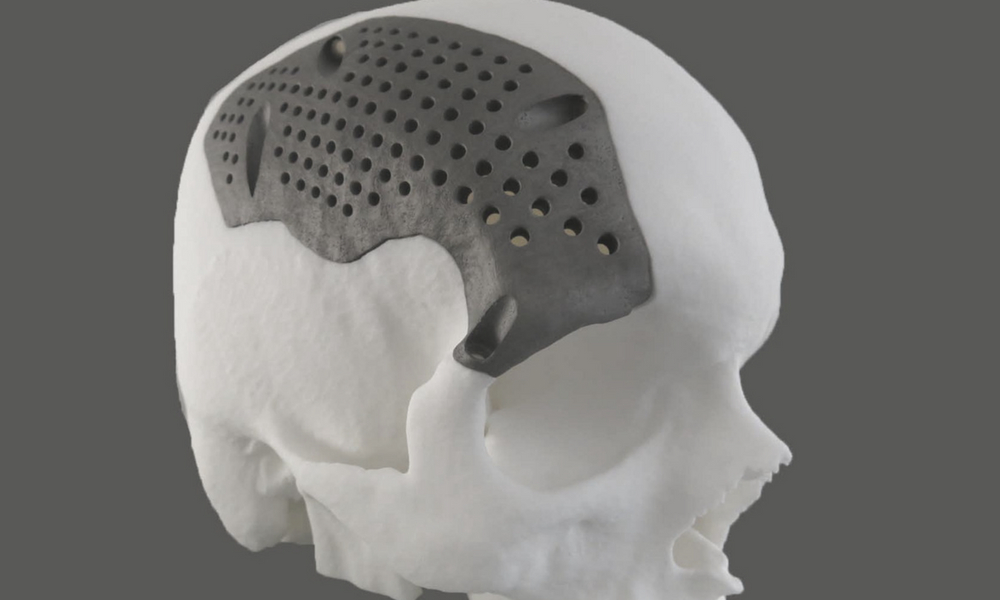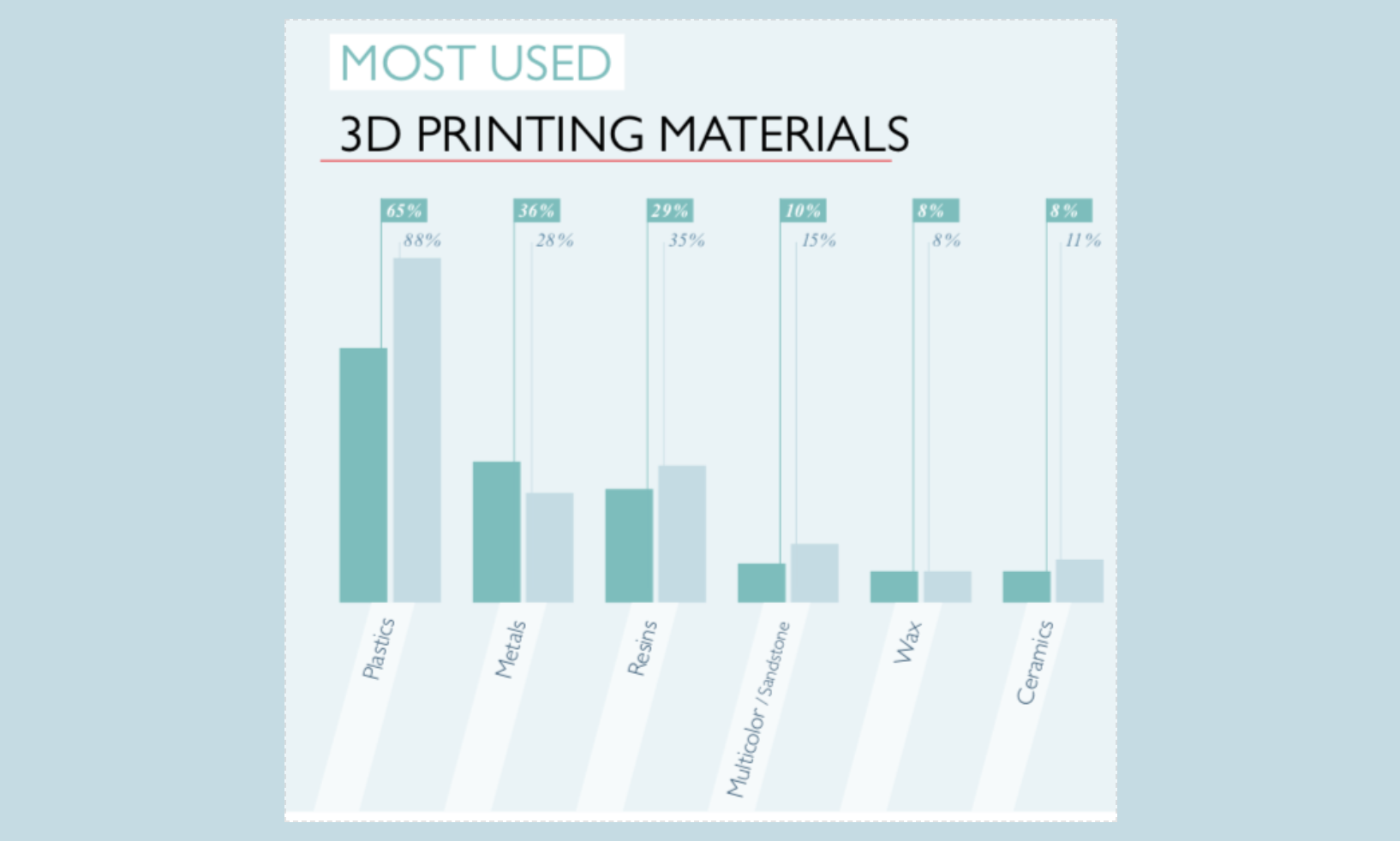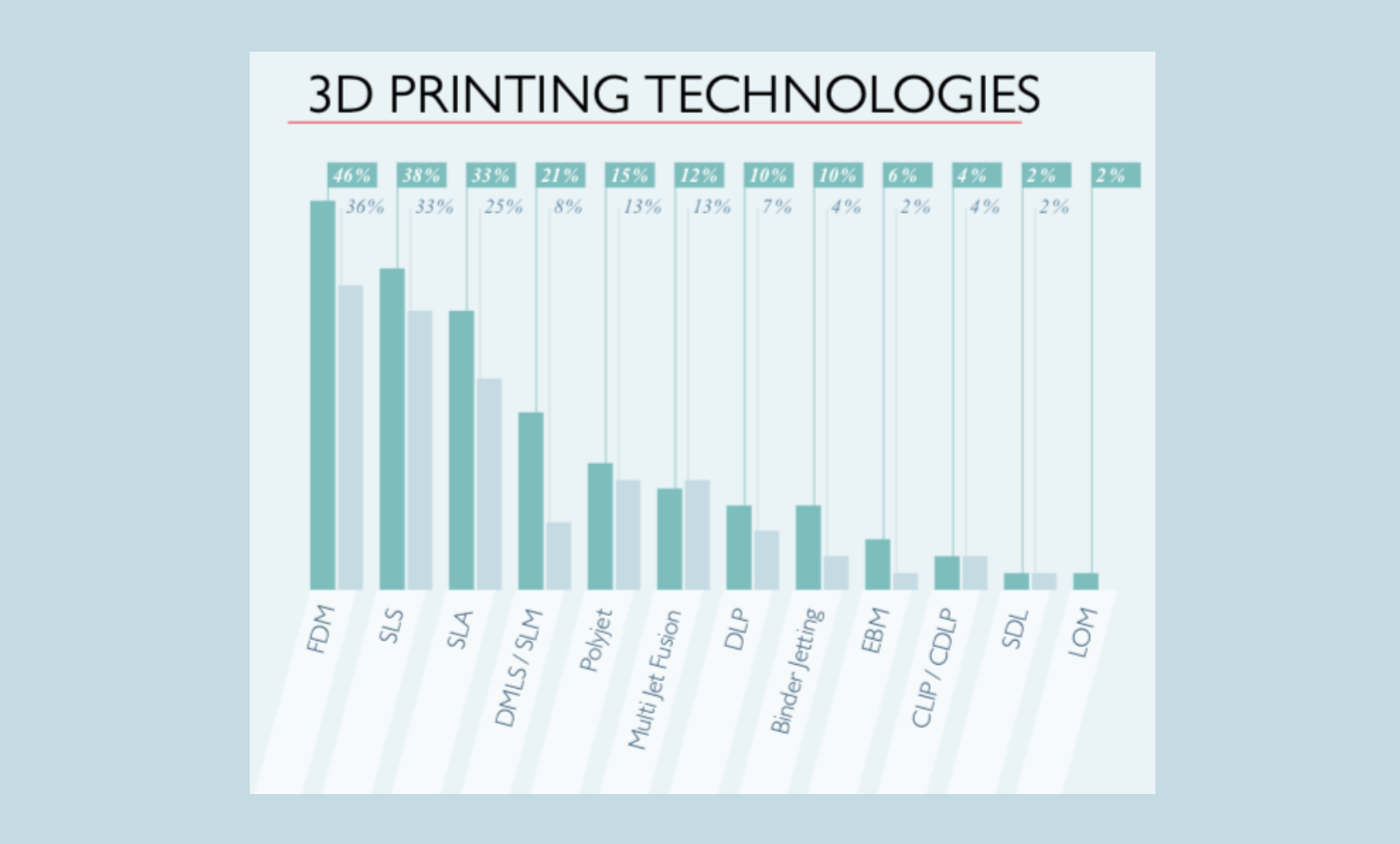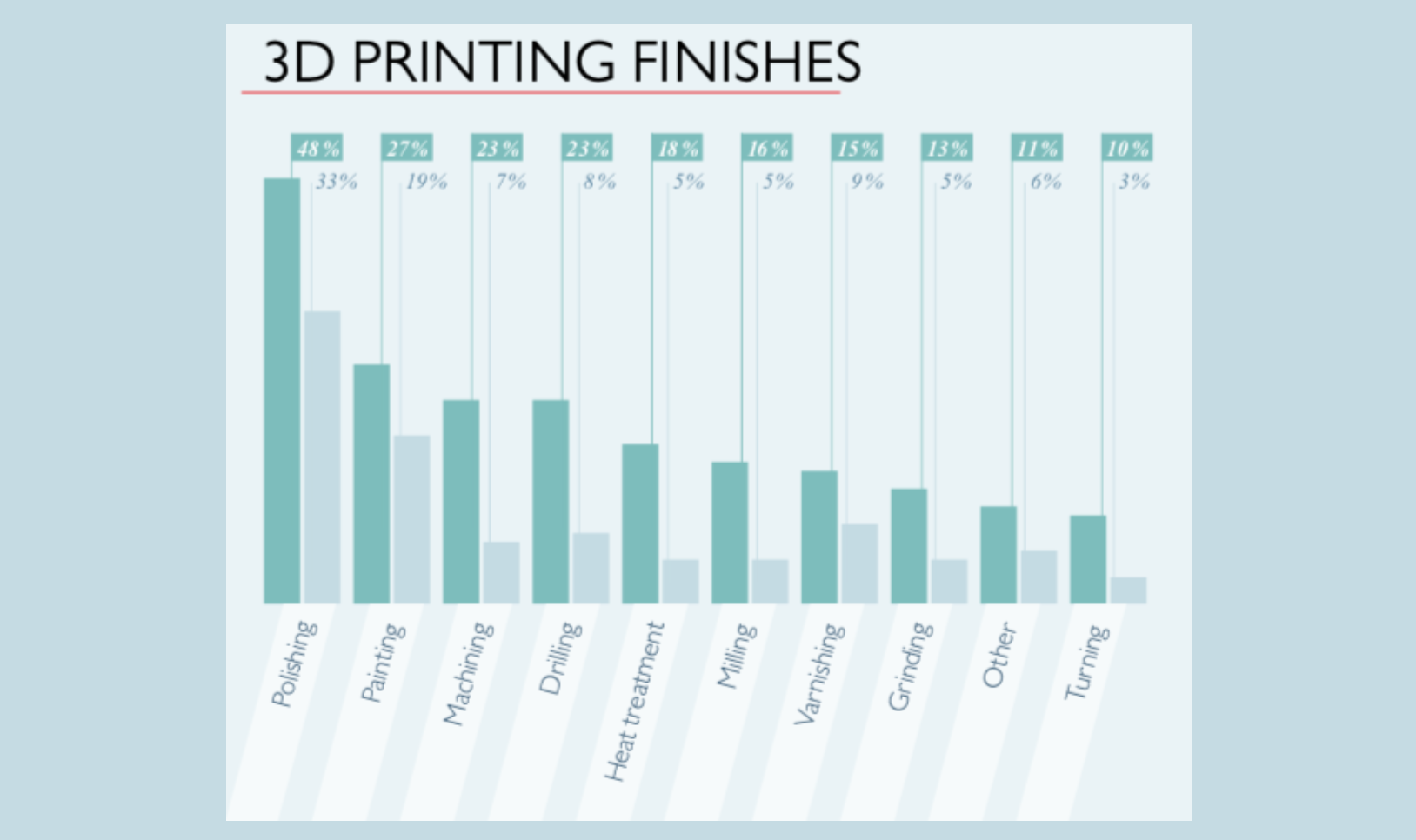State of 3D Printing 2018: The rise of metal 3D printing, DMLS, and finishes!
Posted By Jessica Van Zeijderveld on Jun 12, 2018 | 0 comments
We’re back with another in-depth analysis on the State of 3D Printing 2018. In our last analysis blog post we talked about how businesses use 3D printing, but for this analysis, we will focus on how different 3D printing technologies, materials in particular metal 3D printing, and finishes are used. In this blog post we will first focus on the material usages and metal printing, then on 3D printing technologies and finally on the use of finishes for parts. The actual eBook itself will supply you with all the information on the latest trends regarding the additive manufacturing industry with the help of over a 1000 respondents. You can download it here.
3D printing materials: plastic is still #1
Before we get to the good part regarding metal printing, we would first like to point out how the use of 3D printing materials, in general, has changed compared to last year’s results. It shows that even though plastics have decreased from 88% in 2017 to 65% this year, that it is still the most used 3D printing material. Plastic is still number one due to the material being low in costs and great both for prototyping and production in a way that it allows to do rapid prototyping but also finished goods. Other materials that are used by our respondents include metal (36%), resins (29%), multicolor/sandstone (10%), wax (8%) and ceramics (8%).
The rise of metal 3D printing
We can see that resins have decreased by 6%, the use of multicolor/sandstone has decreased by 5% and the use of ceramics has decreased by 3%. However, we can trace these missing numbers back to metal 3D printing which has gained popularity – having increased from 28% in last year’s edition to 36% this year! Metal 3D printing offers advantages that other materials don’t offer and it seems that our respondents have been notified of these benefits for a year or two.
What are the benefits of metal 3D printing you may ask yourself? Metal 3D printing is particularly ideal for applications that mix high design complexity with low volume production and projects that ensure production flexibility. In last year’s edition, we already saw that metal printing was increasing but this year it proves that it is becoming a real trend which will probably be carried forward to the future of additive manufacturing and manufacturing in general. Would you like to find some good examples of when metal printing was applied? Read our top 7 of the coolest metal 3D printing applications here. Curious as to what our top 6 tips for metal 3D printing with Binder Jetting are? Find out here.
FDM and SLS used by experts but DMLS is surging
If we look at the technologies as a whole, we can tell that our respondents are using more technologies simultaneously compared to last year. There is also a strong growth of the use of the DMLS technology. Whereas last year’s respondents used it by only a mere 8%, this year’s respondents have said to use it by 21% – nearly a tripled increasement. This attests to the fact that metal 3D printing is on the rise as well. It correlates because DMLS is ideal for metal parts meant for either prototyping or low-volume production due to it removing time-consuming tooling. Curious as to what kind of material you should use for your next prototype? Find out here. DMLS can produce complicated and very detailed designs for metal projects.
Still, FDM and SLS are the most used technologies for additive manufacturing and have increased in use as well. This year, 46% of our respondents have said to use FDM compared to 36% from last year’s survey. 38% have said to use the SLS technology which has increased by 5% when looking at 2017’s results. FDM and SLS are mostly used by experts in the additive manufacturing field because these technologies are low in costs and are also able to turn your project into a reality. Both technologies offer freedom of movement during the manufacturing process which allows for the creation of complex parts.
Finishes gaining popularity
While technologies are more used simultaneously, finishes are also more used in general. And when we say used more, we mean a significant amount more. Heat treatment was chosen by 18% of our respondents whereas last year it was only chosen by 5%, milling was chosen by 16% of our respondents whereas last year it was only chosen by 5% as well, varnishing was chosen by 15% of our respondents whereas last year it was only chosen by 9%, grinding was chosen by 13% of our respondents whereas last year it was only chosen by, yet again, 5% and turning was chosen by 10% of our respondents whereas last year it was only chosen by 3%.
If we look at the most chosen finishes, we find that those are polishing (48%) and painting (27%). The two finishes that significantly changed the most in this year’s State of 3D Printing are machining (23%) with a 16% increase and drilling (23%) with a 15% increase compared to last year. Organisations are interested in the usage of finishes for their parts due to the extra benefits that are brought along with them – be it a different color, surface touch or even the ability to strengthen a part against external factors.
Curious for other 3D printing technology trends?
In this analysis we analyzed how metal 3D printing is applied, but what about how other industries such as industrial goods, consumer goods, and aeronautics use certain 3D printing materials, technologies or finishes? Get the answers to all your questions in the 2018 edition of the State of 3D printing downloadable for free here! You can find the 2017 State of 3D printing edition here. Curious about the latest development in the additive manufacturing industry? Sign up for our newsletter!


 Connect with Google
Connect with Google Connect with Facebook
Connect with Facebook


